Murals seen in Donggar and Piyang grottoes in Tibet
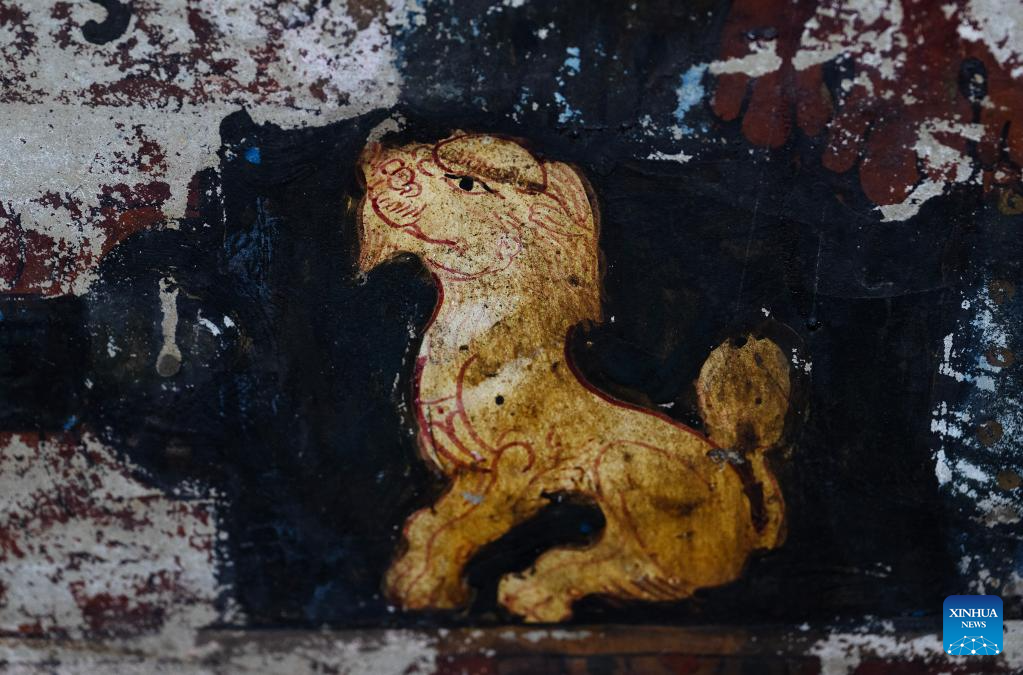
This photo taken shows a lion in a mural in a grotto in Zanda County of Ngari Prefecture, southwest China's Tibet Autonomous Region. Known as the Donggar and Piyang grottoes, the 1,000-year-old caverns in the Tibet Autonomous Region's Ngari Prefecture hold one of the world's greatest collections of Tibetan Buddhist murals.
Frescoes that are currently open to the public mainly depict Buddhas, Bodhisattvas and other deities, but also feature animals that are not native to Ngari. (Xinhua/Fei Maohua)
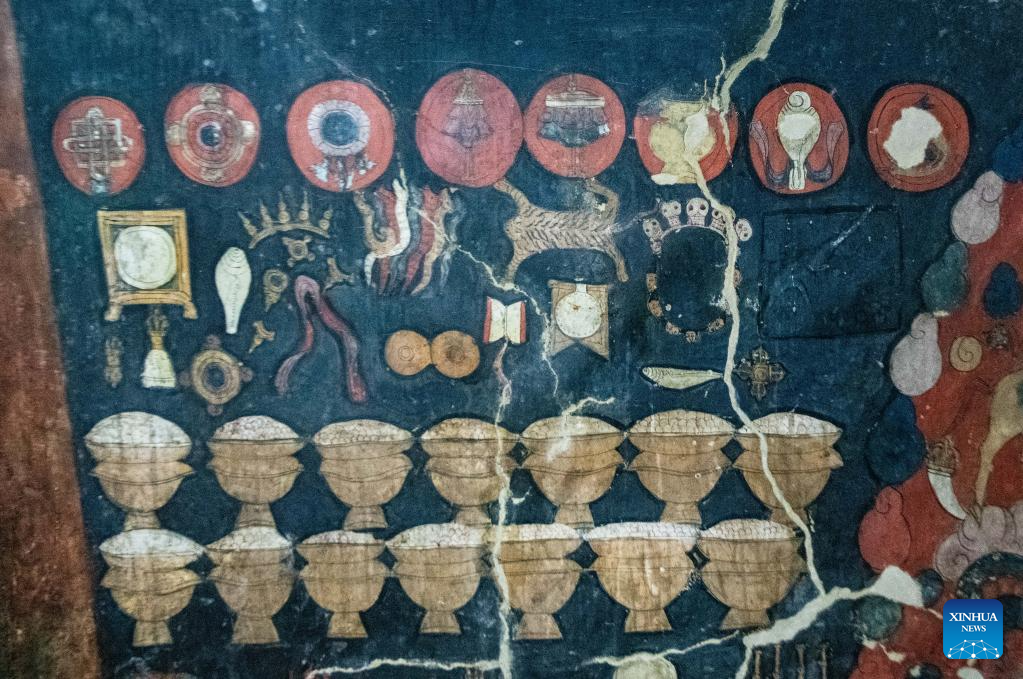
This photo taken shows part of a mural in a grotto in Zanda County of Ngari Prefecture, southwest China's Tibet Autonomous Region. Known as the Donggar and Piyang grottoes, the 1,000-year-old caverns in the Tibet Autonomous Region's Ngari Prefecture hold one of the world's greatest collections of Tibetan Buddhist murals.
Frescoes that are currently open to the public mainly depict Buddhas, Bodhisattvas and other deities, but also feature animals that are not native to Ngari. (Xinhua/Jigme Dorje)
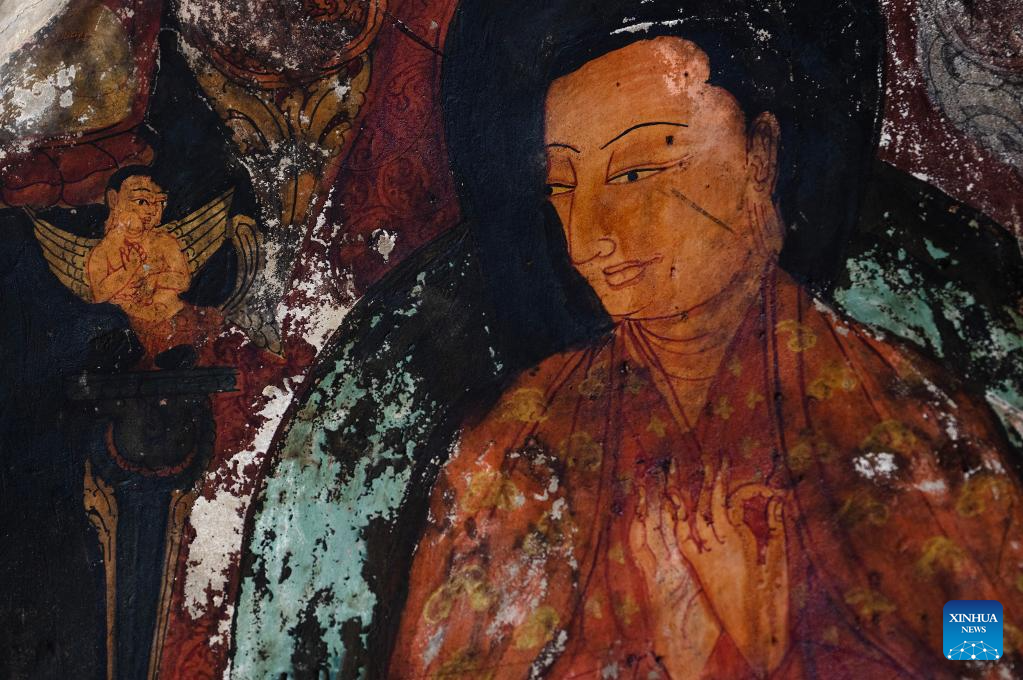
This photo taken shows part of a mural in a grotto in Zanda County of Ngari Prefecture, southwest China's Tibet Autonomous Region. Known as the Donggar and Piyang grottoes, the 1,000-year-old caverns in the Tibet Autonomous Region's Ngari Prefecture hold one of the world's greatest collections of Tibetan Buddhist murals.
Frescoes that are currently open to the public mainly depict Buddhas, Bodhisattvas and other deities, but also feature animals that are not native to Ngari. (Xinhua/Fei Maohua)
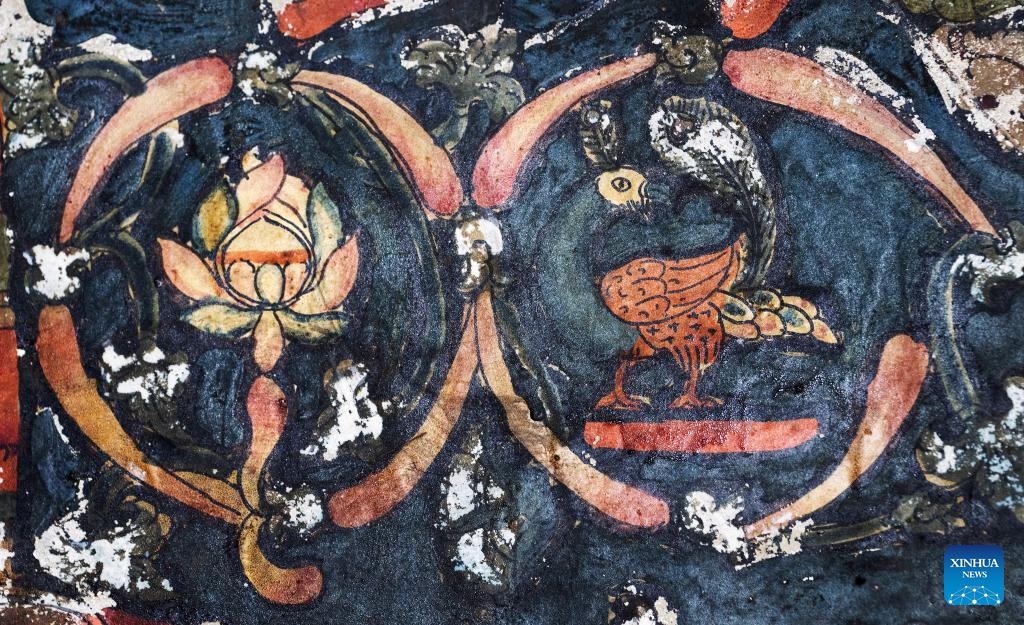
This photo taken shows part of a mural in a grotto in Zanda County of Ngari Prefecture, southwest China's Tibet Autonomous Region. Known as the Donggar and Piyang grottoes, the 1,000-year-old caverns in the Tibet Autonomous Region's Ngari Prefecture hold one of the world's greatest collections of Tibetan Buddhist murals.
Frescoes that are currently open to the public mainly depict Buddhas, Bodhisattvas and other deities, but also feature animals that are not native to Ngari. (Xinhua/Fei Maohua)
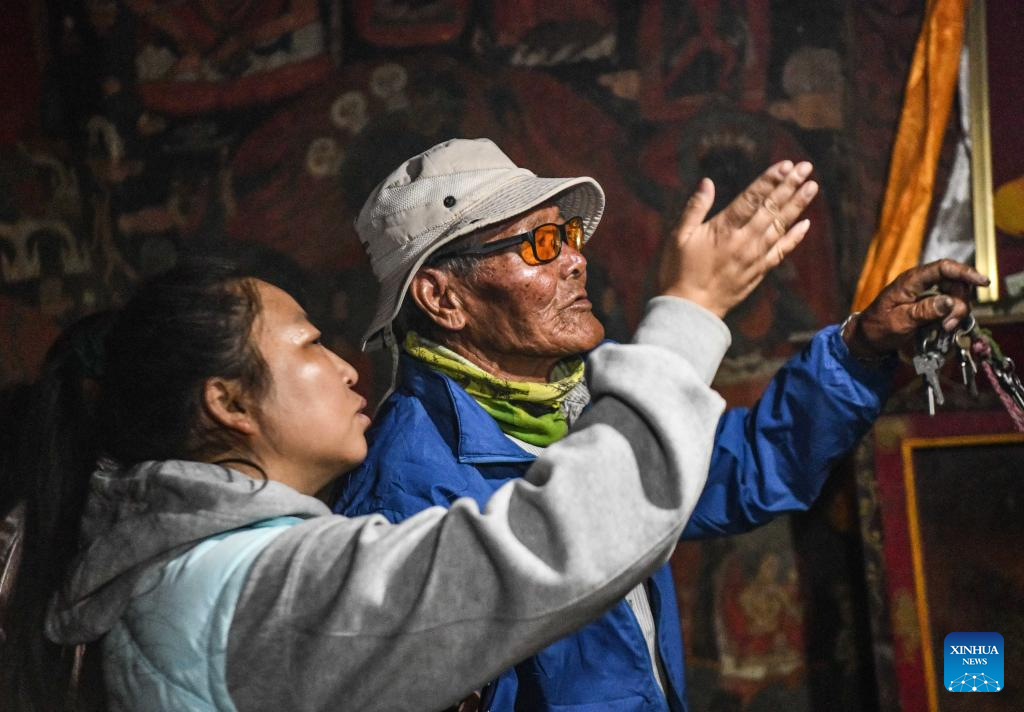
Rigzin Wangzhab, who has been guarding the Donggar and Piyang grottoes for more than 20 years, explains to a tourist as they look at the mural in a grotto in Zanda County of Ngari Prefecture, southwest China's Tibet Autonomous Region, May 26, 2023. Known as the Donggar and Piyang grottoes, the 1,000-year-old caverns in the Tibet Autonomous Region's Ngari Prefecture hold one of the world's greatest collections of Tibetan Buddhist murals.
Frescoes that are currently open to the public mainly depict Buddhas, Bodhisattvas and other deities, but also feature animals that are not native to Ngari. (Xinhua/Jigme Dorje)
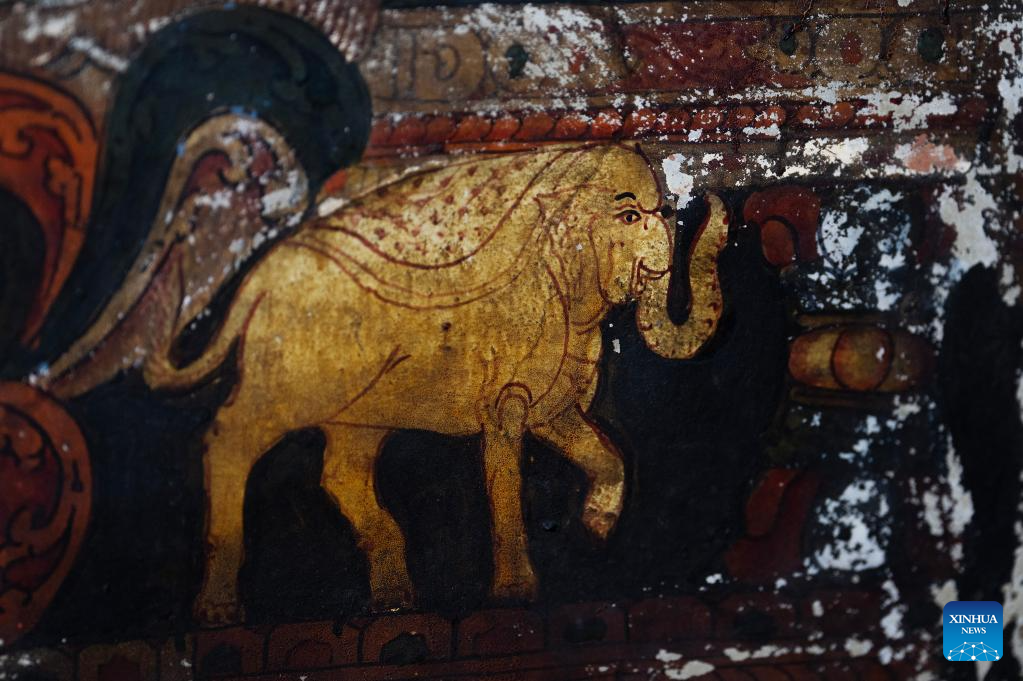
This photo taken shows an elephant in a mural in a grotto in Zanda County of Ngari Prefecture, southwest China's Tibet Autonomous Region. Known as the Donggar and Piyang grottoes, the 1,000-year-old caverns in the Tibet Autonomous Region's Ngari Prefecture hold one of the world's greatest collections of Tibetan Buddhist murals.
Frescoes that are currently open to the public mainly depict Buddhas, Bodhisattvas and other deities, but also feature animals that are not native to Ngari. (Xinhua/Fei Maohua)
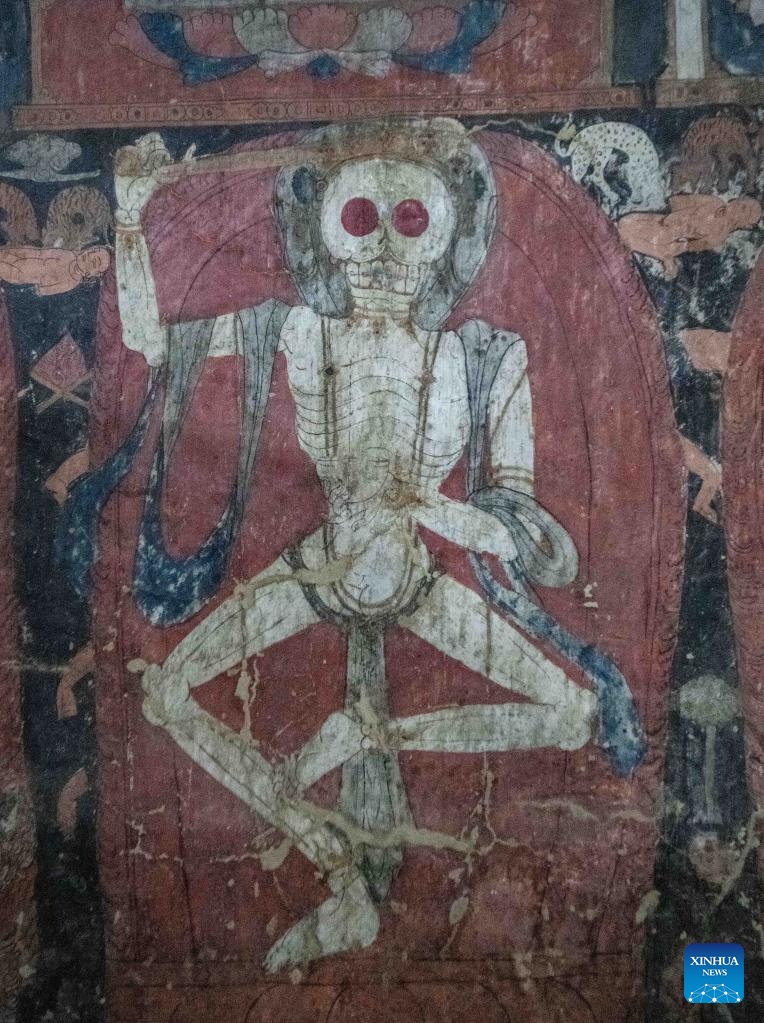
This photo taken shows a skeleton in a mural in a grotto in Zanda County of Ngari Prefecture, southwest China's Tibet Autonomous Region. Known as the Donggar and Piyang grottoes, the 1,000-year-old caverns in the Tibet Autonomous Region's Ngari Prefecture hold one of the world's greatest collections of Tibetan Buddhist murals.
Frescoes that are currently open to the public mainly depict Buddhas, Bodhisattvas and other deities, but also feature animals that are not native to Ngari. (Xinhua/Jigme Dorje)
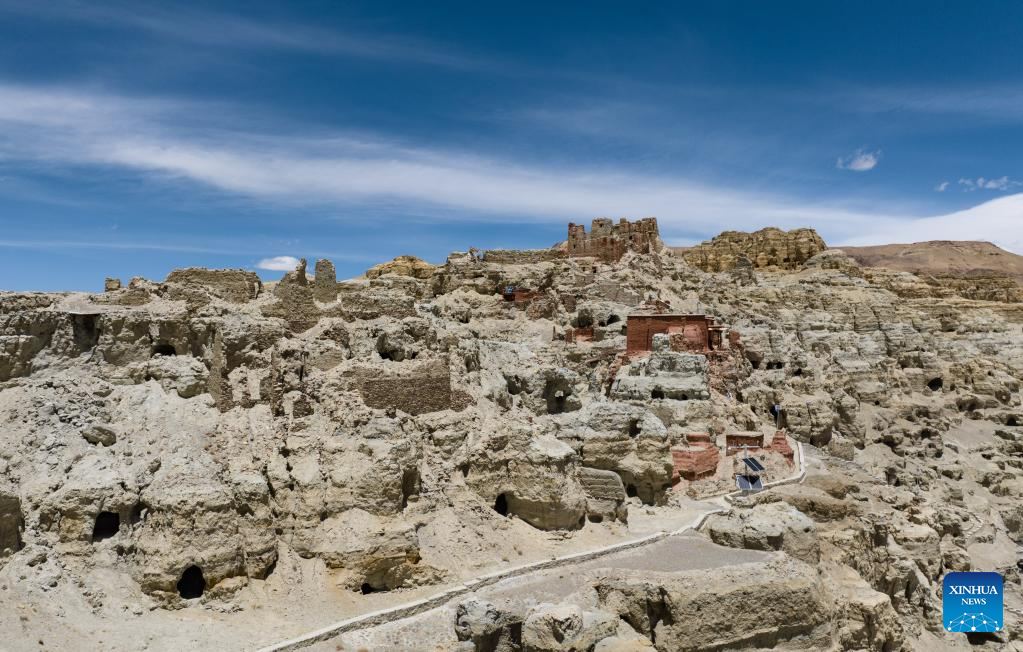
This aerial photo taken shows the Piyang grottoes in Zanda County of Ngari Prefecture, southwest China's Tibet Autonomous Region. Known as the Donggar and Piyang grottoes, the 1,000-year-old caverns in the Tibet Autonomous Region's Ngari Prefecture hold one of the world's greatest collections of Tibetan Buddhist murals.
Frescoes that are currently open to the public mainly depict Buddhas, Bodhisattvas and other deities, but also feature animals that are not native to Ngari. (Xinhua/Jigme Dorje)
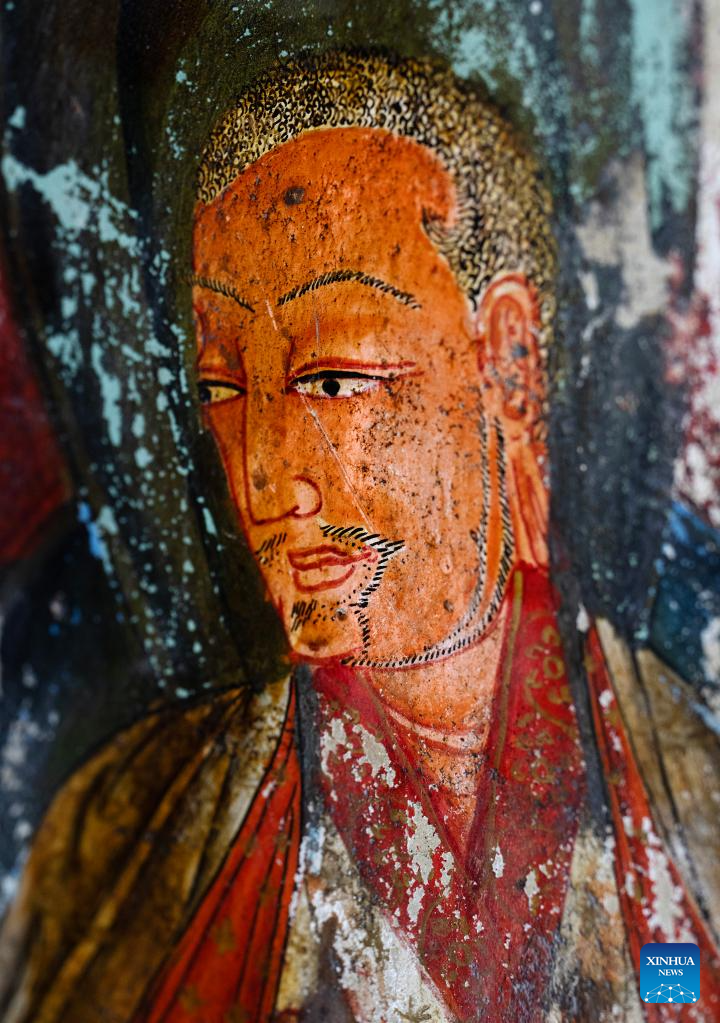
This photo taken shows part of a mural in a grotto in Zanda County of Ngari Prefecture, southwest China's Tibet Autonomous Region. Known as the Donggar and Piyang grottoes, the 1,000-year-old caverns in the Tibet Autonomous Region's Ngari Prefecture hold one of the world's greatest collections of Tibetan Buddhist murals.
Frescoes that are currently open to the public mainly depict Buddhas, Bodhisattvas and other deities, but also feature animals that are not native to Ngari. (Xinhua/Fei Maohua)
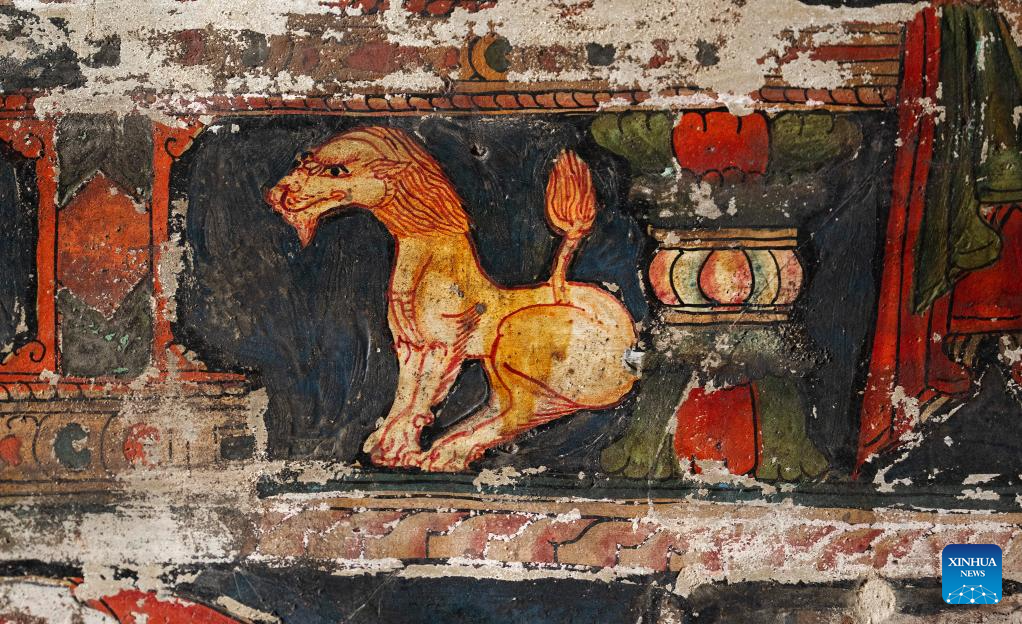
This photo taken shows a lion in a mural in a grotto in Zanda County of Ngari Prefecture, southwest China's Tibet Autonomous Region. Known as the Donggar and Piyang grottoes, the 1,000-year-old caverns in the Tibet Autonomous Region's Ngari Prefecture hold one of the world's greatest collections of Tibetan Buddhist murals.
Frescoes that are currently open to the public mainly depict Buddhas, Bodhisattvas and other deities, but also feature animals that are not native to Ngari. (Xinhua/Fei Maohua)
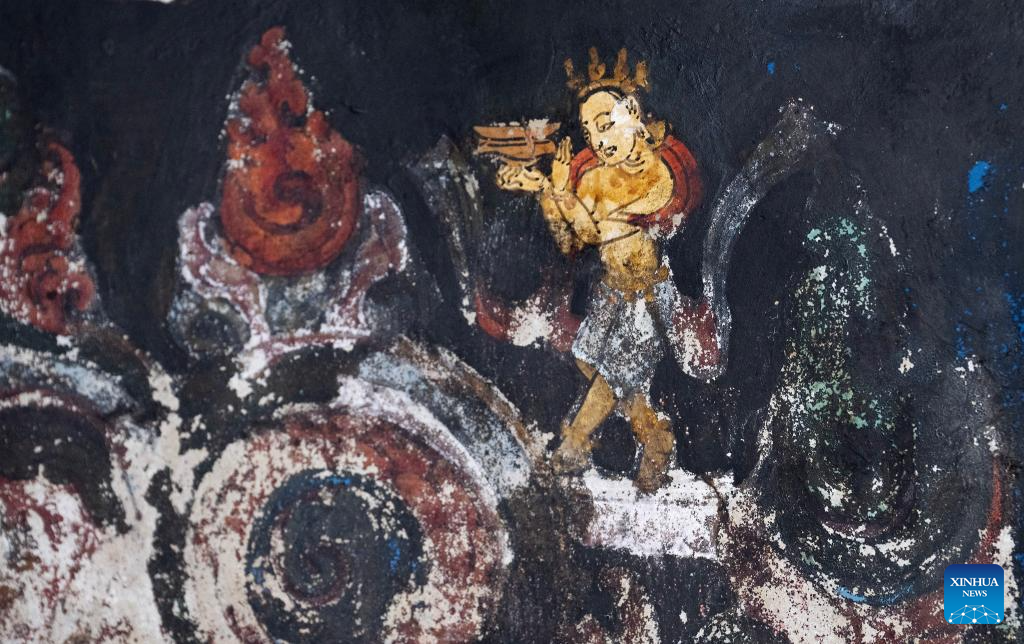
This photo taken shows part of a mural in a grotto in Zanda County of Ngari Prefecture, southwest China's Tibet Autonomous Region. Known as the Donggar and Piyang grottoes, the 1,000-year-old caverns in the Tibet Autonomous Region's Ngari Prefecture hold one of the world's greatest collections of Tibetan Buddhist murals.
Frescoes that are currently open to the public mainly depict Buddhas, Bodhisattvas and other deities, but also feature animals that are not native to Ngari. (Xinhua/Fei Maohua)
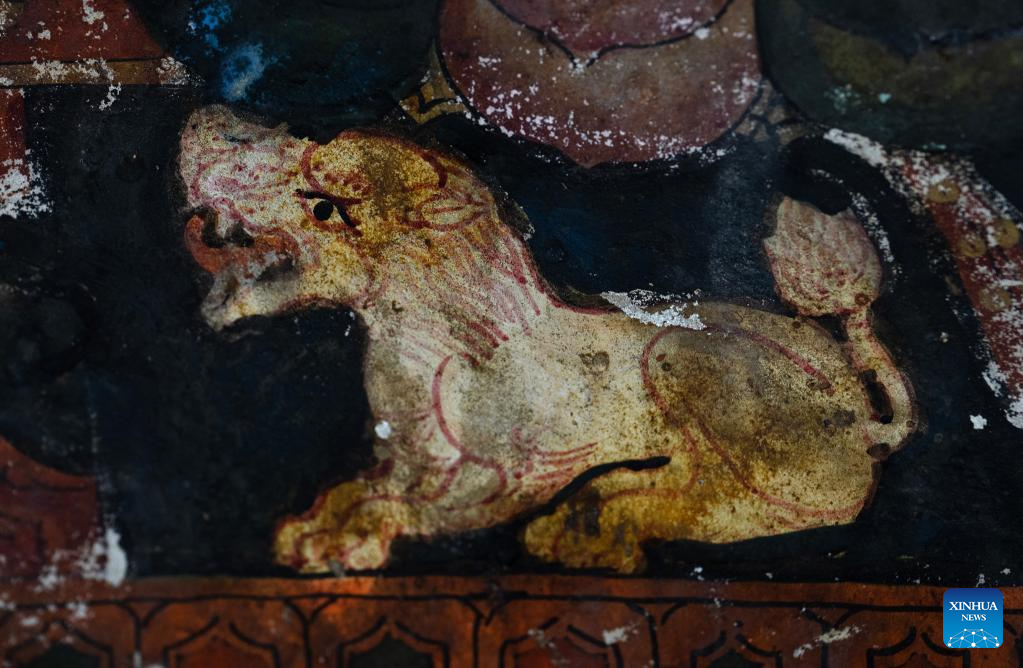
This photo taken shows a lion in a mural in a grotto in Zanda County of Ngari Prefecture, southwest China's Tibet Autonomous Region. Known as the Donggar and Piyang grottoes, the 1,000-year-old caverns in the Tibet Autonomous Region's Ngari Prefecture hold one of the world's greatest collections of Tibetan Buddhist murals.
Frescoes that are currently open to the public mainly depict Buddhas, Bodhisattvas and other deities, but also feature animals that are not native to Ngari. (Xinhua/Fei Maohua)
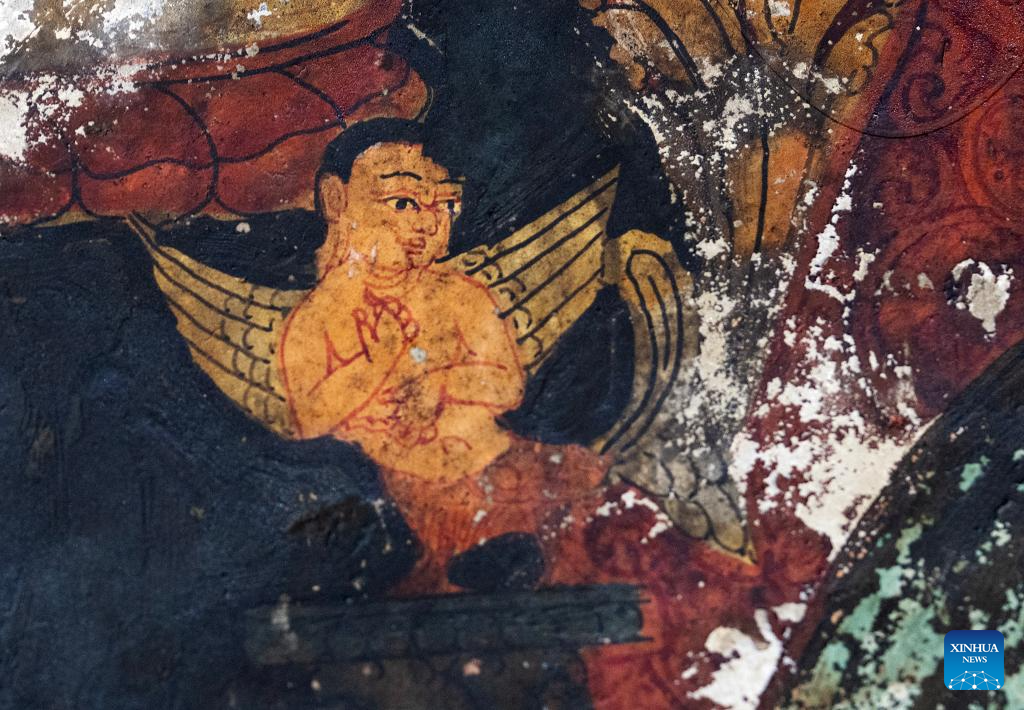
This photo taken shows part of a mural in a grotto in Zanda County of Ngari Prefecture, southwest China's Tibet Autonomous Region. Known as the Donggar and Piyang grottoes, the 1,000-year-old caverns in the Tibet Autonomous Region's Ngari Prefecture hold one of the world's greatest collections of Tibetan Buddhist murals.
Frescoes that are currently open to the public mainly depict Buddhas, Bodhisattvas, and other deities, but also feature animals that are not native to Ngari. (Xinhua/Fei Maohua)
Related articles
-
 Enter the dragons
Enter the dragonsMore
-
 Exquisite jade artifacts on display at Shanxi Museum
Exquisite jade artifacts on display at Shanxi MuseumMore
-
 Sumptuous Persian relics reveal legacy of cultural connections
Sumptuous Persian relics reveal legacy of cultural connectionsMore
-
 Inlaid Turquoise Bronze Plaque
Inlaid Turquoise Bronze PlaqueMore
-
 Returned treasure the centerpiece at artifact exhibition in NE China
Returned treasure the centerpiece at artifact exhibition in NE ChinaMore
-
 Dehua porcelain int'l exhibition held at UN
Dehua porcelain int'l exhibition held at UNMore
